Overview of the Equipment (Eurasia 2.0)
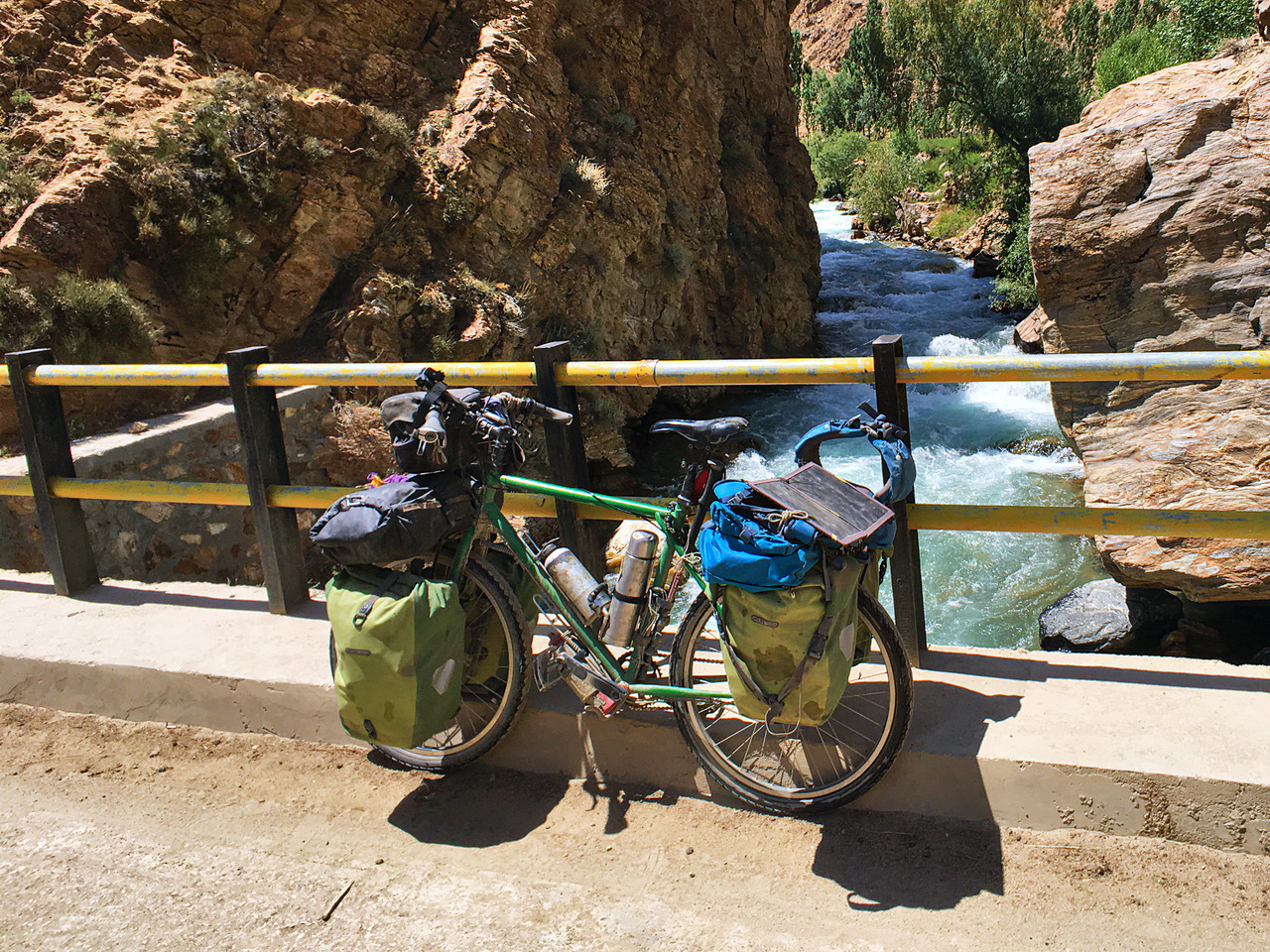
The weight of my bike was usually between 50 and 70 kilograms, but there have been moments when I had to transport well over 100 kilograms of weight. I carried the following pieces of equipment with me:
Bicycle and Panniers
I packed my equipment in panniers (bags), which can be attached to the bike. The following items are usually visible from the outside:
- Bicycle (with rear carrier Logo Evo by Tubus and height-adjustable front carrier and mechanical disc brakes)
- Helmet
- Drinking bottle and thermos
- Green panniers 4 x 20 liters (2x front, 2x back)
- Dark Packsack 50 Liter Fold Drybag Endura by Exped
- Blue Backpack 75 Liter Explore 75 by Exped (for hiking or transporting a lot of luggage)
- Accessory Strap UL 120 cm by Exped
- 3 Part Fixture Straps by Tubus
- Black handlebar bag 7 Liter
- Lightweight bike lock
- Small USB rechargeable tail light
- Winter tires Ice Spiker Pro by Schwalbe for Siberia (ideal on ice and icy roads, but can also be ridden on asphalt without getting damaged.)
- Trekking poles (for hiking and challenging river crossings)
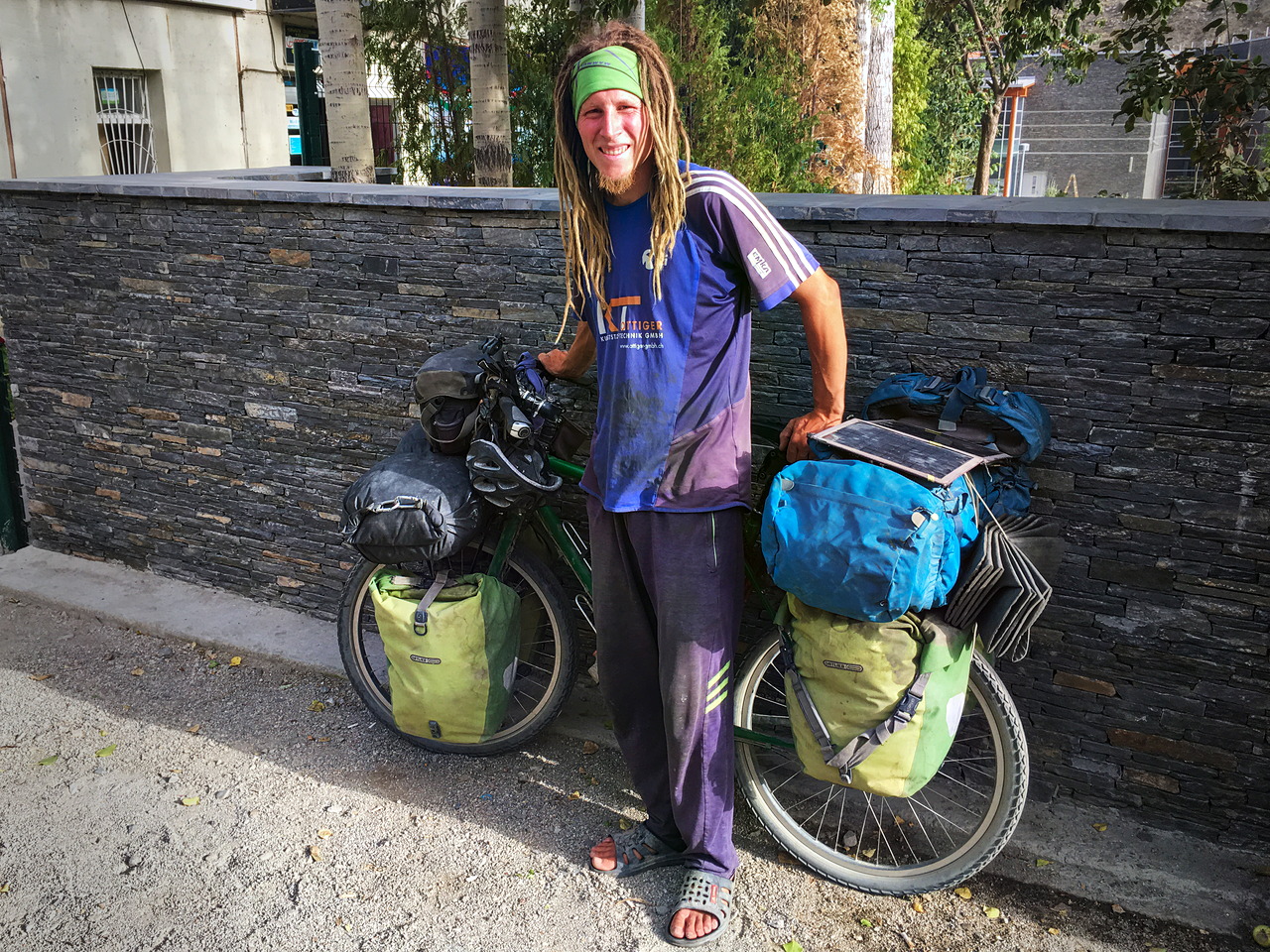
Clothing
In general I tried to transport as few clothes as necessary. Depending on the climate, I carried the following items:
- Sleeveless shirt (in summer)
- T-Shirt
- Longsleeve shirt
- Warm sweater (in winter)
- Breathable fleece midlayer
- Thin, down-free winter jacket
- Warm, down-free winter jacket (in winter)
- Windbreaker (old and leaky rain jacket)
- Rain jacket
- Boxershorts (4x)
- Short pants (in summer)
- Long underwear
- Long pants
- Warm mountain pants (in winter)
- Warm, down-free 3/4 winter pants (in winter)
- Windbreaker pants (old and leaky rain pants)
- Rain pants
- Flipflops (in summer)
- Thin socks (2x)
- Warm socks (2x) (without wool)
- Half-height, leather-free, waterproof hiking boots
- Very warm, leather-free and wool-free winter boots (in winter)
- Thin synthetic tubular cloth (summer headband or face protection)
- Warm synthetic tubular cloth (collar or face protection in winter)
- Headband
- Balaclava with mask (in winter)
- Longsleeve shirt and long trousers („nice“ clothes)
- Inner gloves and outer gloves Arctic Hummer by Veloplus
- Additional, warmer inner gloves (in winter)
- Warm mitts (in winter)
- Sunglasses
- Ski goggles (in winter)
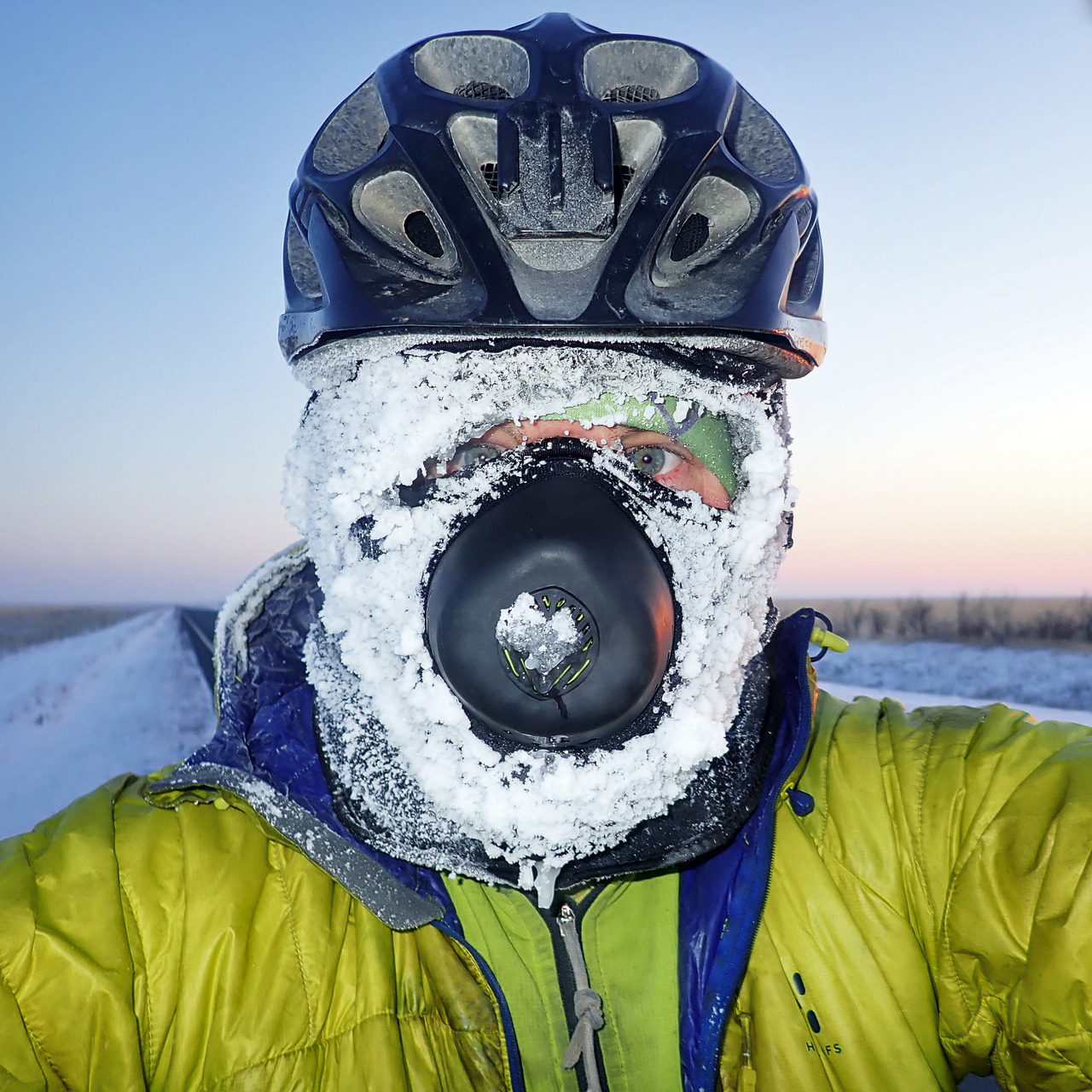
Overnight Stay
Very often I sleep in the tent. To save weight, I used a (very versatile) 1-person tent in summer. For the winter I had a free-standing 2-person tent. Before the winter, I was traveling with two sleeping bags, which gave me the opportunity to comfortably sleep in all temperatures above -20 degrees. For the winter in Siberia, I carried an even warmer sleeping bag with me, which in combination with one of the others gave me the opportunity to spend the night at -40 degrees in the tent. My home is set up as follows:
- Tent (in summer) Vela I Extreme (older version without zipper) by Exped
- Tent (in winter) Orion II Extreme by Exped
- Ice screws (4x) (to anchor tent on frozen Lake Baikal)
- Synthetic sleeping bag red,
suitable for temperatures above 0 degrees (or -4 degrees according to the manufacturer) - Synthetic sleeping bag blue,
suitable for temperatures above -10 degrees (or -20 degrees according to the manufacturer)
Combining red and blue sleeping bag is suitable for temperatures above -25 degrees (or -40 degrees according to the manufacturer) - Synthetic sleeping bag Tyin MTI 5-Season by Mammut, suitable for temperatures above -25 degrees
- Thin sleeping mat
- Relatively narrow, inflatable, warm sleeping mat SynMat TT 9 M (prototype 2nd generation) by Exped (in summer)
- Wide, inflatable, warm sleeping mat SynMat TT 9 LW (1st generation) by Exped (in winter)
- Inflatable pillow
- Camp shoes Syn Booty by Exped (in Winter)
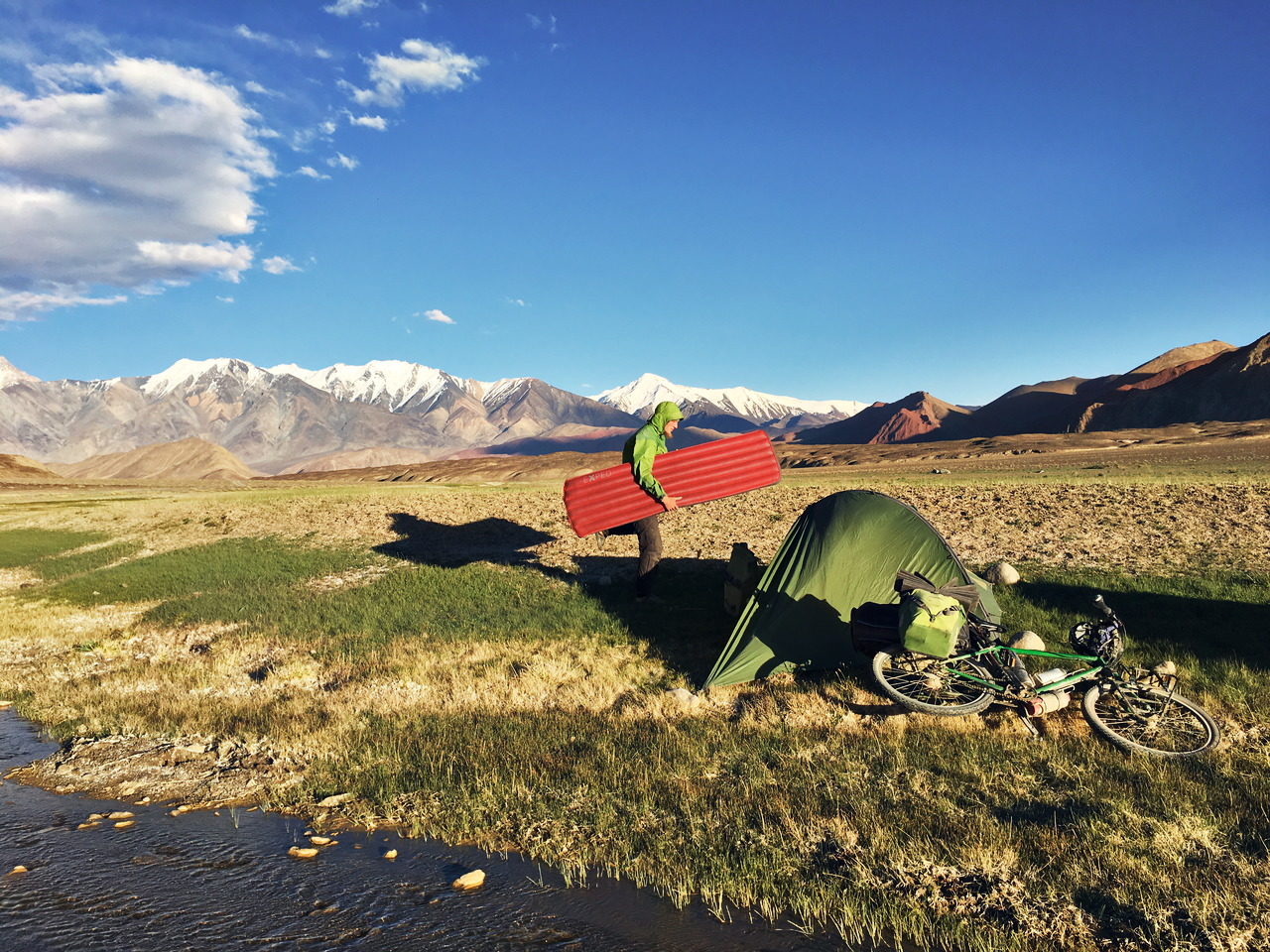
Food and Cooking
To prepare my vegan dishes, I had the following items with me:
- Water bag (10 Liter)
- Water filter
- Purification tablets (if the water filter doesn’t work)
- Stove incl. wind protection / heat reflector (unfortunately the OmniFuel II by Primus was very unreliable!
So I switched to an MSR XGK-EX after the trip.) - Fuel bottle
- Lighter (2x)
- Ignition Steel
- Pots (2x 2.3 Liter) and lid
- Plate (also used as a cutting board)
- Cutting knife (part of my multi-tool with pliers)
- Peeler
- Cutlery (knife, fork, spoon, long spoon)
- Salt
- Thermos with cup (ideal for cold or heat)
- Second thermos with cup (in winter)
- Leak-proof container (reBOX)
- Locking clips
- Old plastic bags (as trash bags)
- Cotton bag (for shopping)
- Food supplies
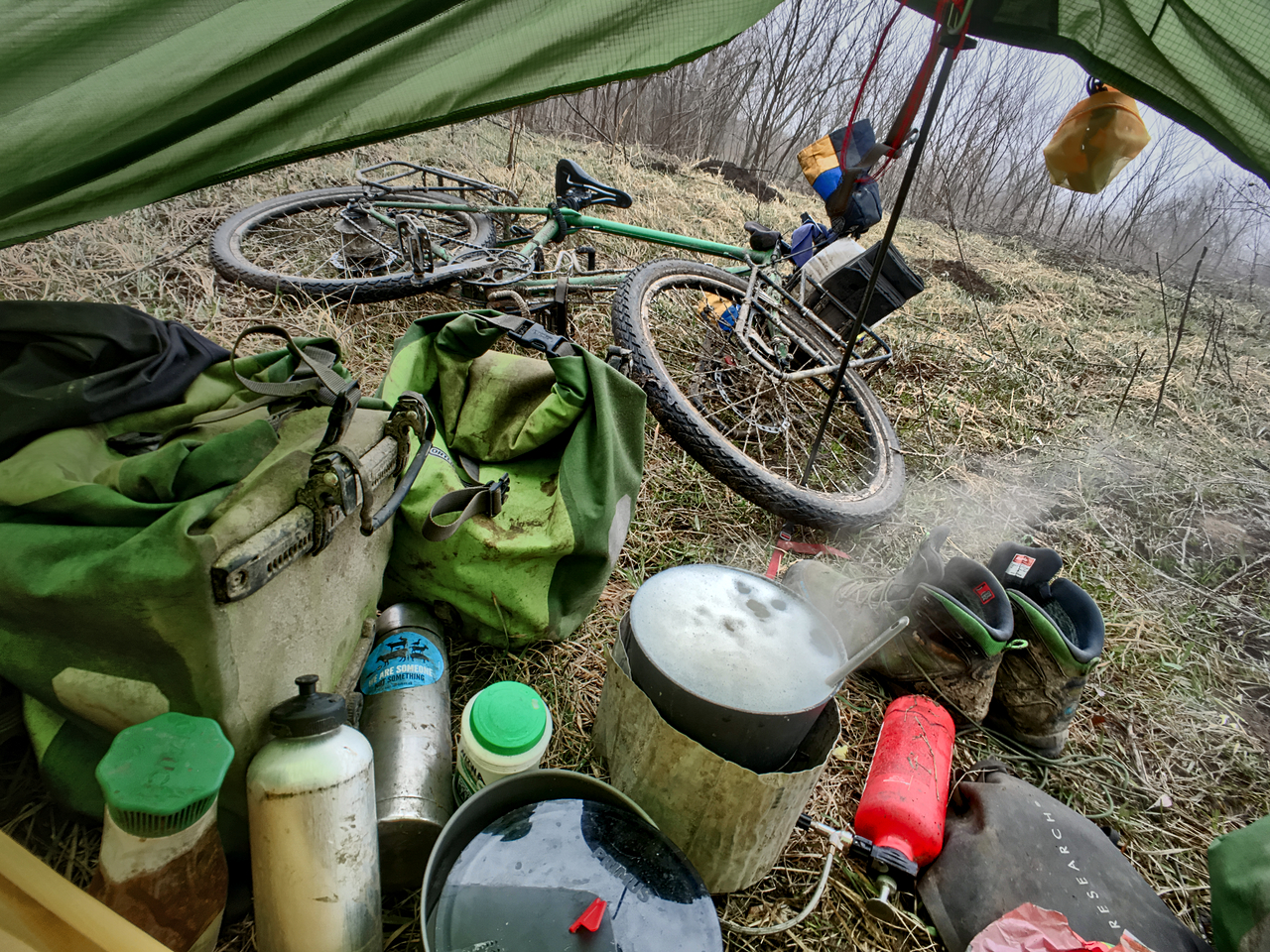
Health and Hygiene
- Medicines, anti-inflammatory ointment, patches, tweezers etc.
- Emergency blanket
- Toilet paper (waterproof packed)
- Vegan soap (for dreadlocks)
- Cloth (2x, one for drying)
- Toothbrush and toothpaste
- Razor
- Moisturizing cream
- Lip balm (several)
- Sunscreen
- Small mirror
- Nail clippers
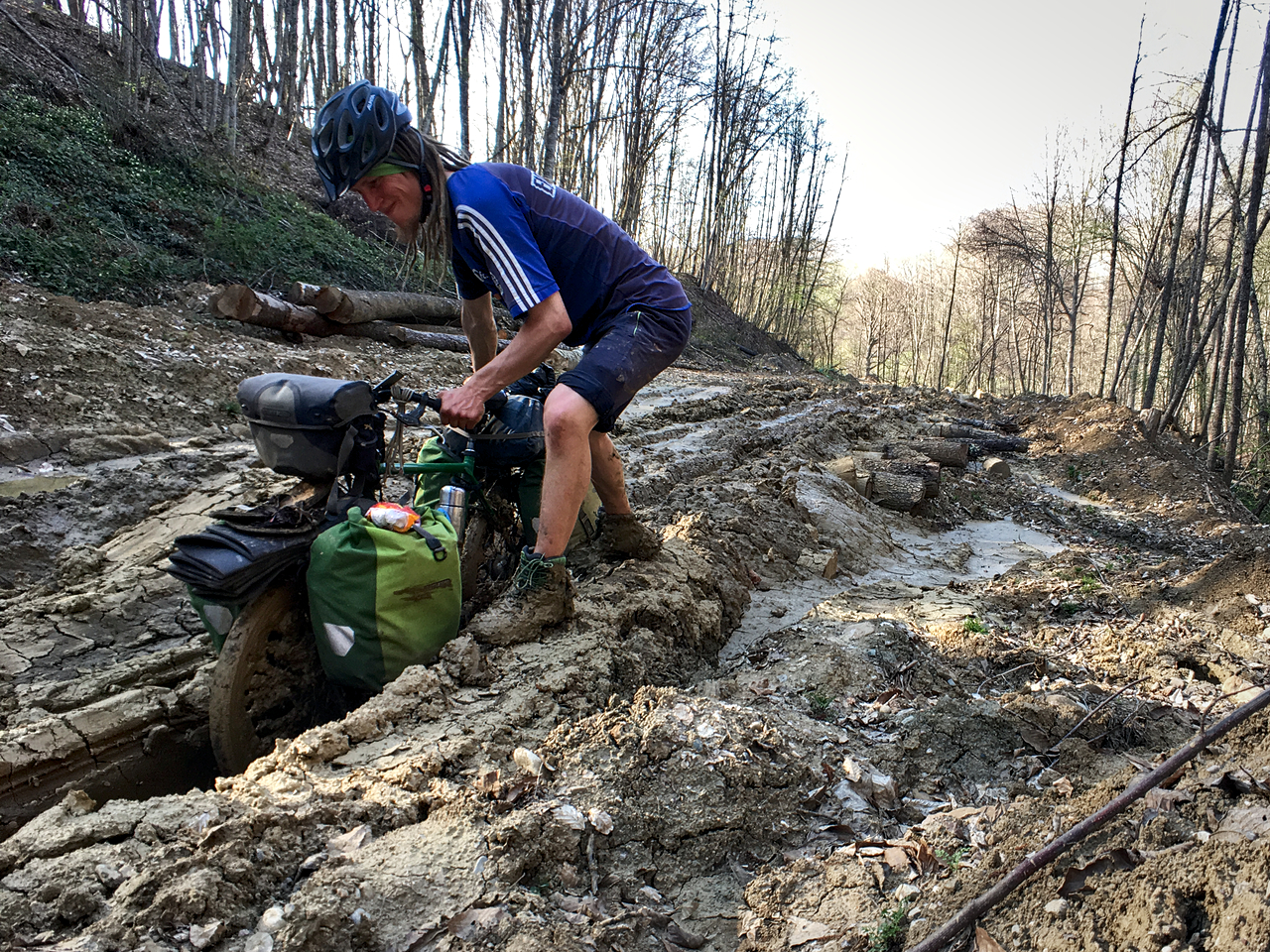
Paperwork
- Passport
- Permits (if needed)
- Identity card
- Cash
- Credit cards
- Passport pictures
- Pen
- OhneWörterBuch (small book with pictures)
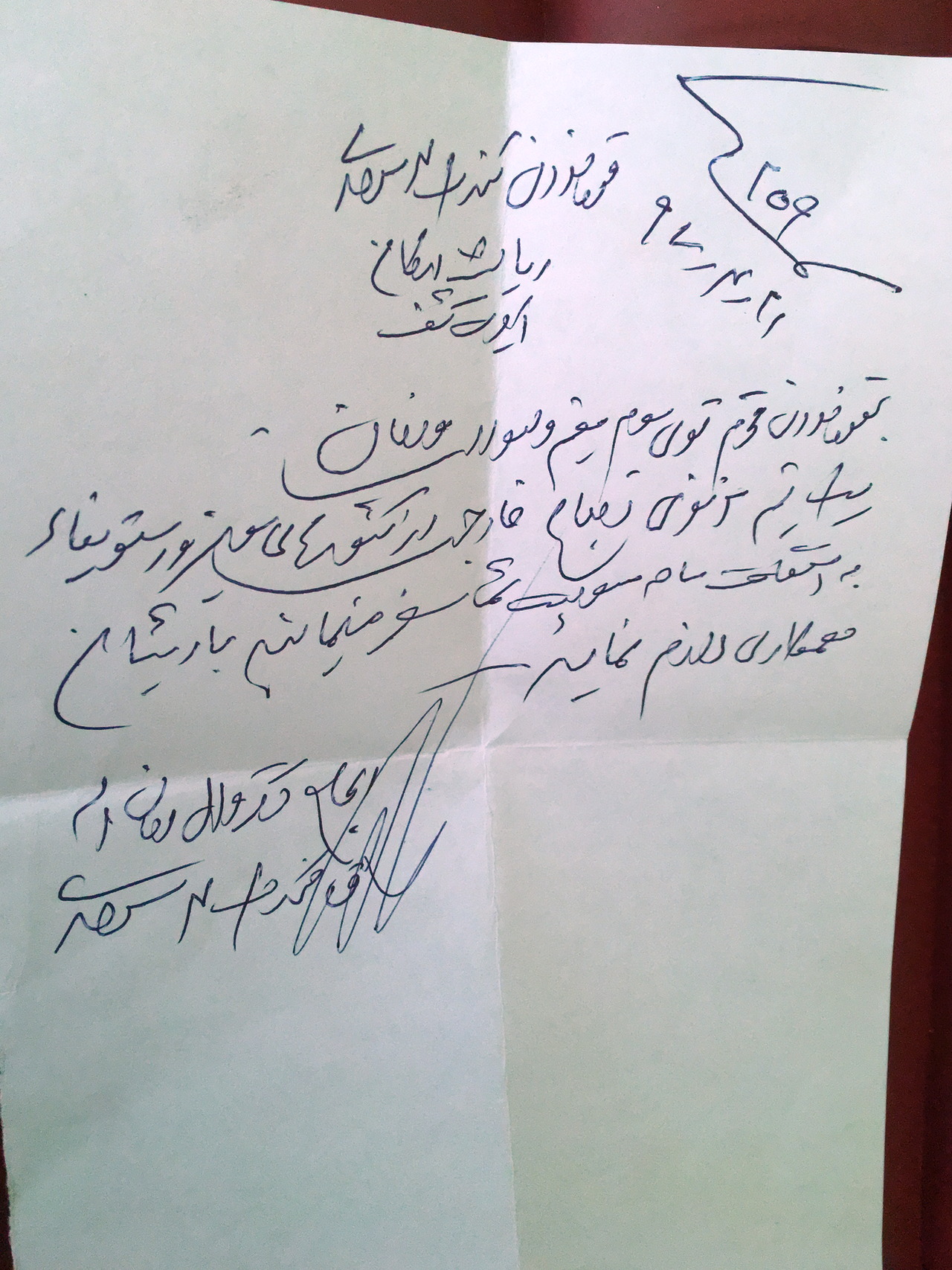
Electronics
Since I did not want to give up electronic devices, I bought an E-Werk for my first Eurasia travel. The E-Werk can be connected to the dynamo hub and makes the power generated by cycling usable. Some electronic devices are sensitive to fluctuations in the charging voltage. Since the E-Werk has some fluctuations, I bought in addition a buffer battery of the same manufacturer. Unfortunately, I was only disappointed by the E-Werk and buffer battery: I had to replace the buffer battery twice, the E-Werk even four times, so I can not recommend this product at all. For Eurasia 2.0 I used a current transformer from another manufacturer. Unfortunately, this device was also broken. The following items were part of my electronic equipment:
- Igaro D1
- Solar panel (14W) and power bank (58Wh) incl. power adapter for charging at the socket (Solar panal and power bank broke on the way)
- Smartphone (map – camera – music – notes) with an adapter for the camera lenses (wide angle and telephoto)
- Robust, water-, shock- and freeze-proof camera (in winter) (unfortunately it didn’t work as expected already at 5 degrees)
- Small tripod
- GPS (satellite communicators enable two-way text messaging)
- Gimbal (only in summer)
- Laptop incl. mouse and power supply
- USB sticks and micro SD cards
- Drone with accessories (filter)
- Mp3 player
- Headphones
- Bicycle computer
- USB charger
- Various charging cables (including spare cable)
- Headlamp (also as front light)
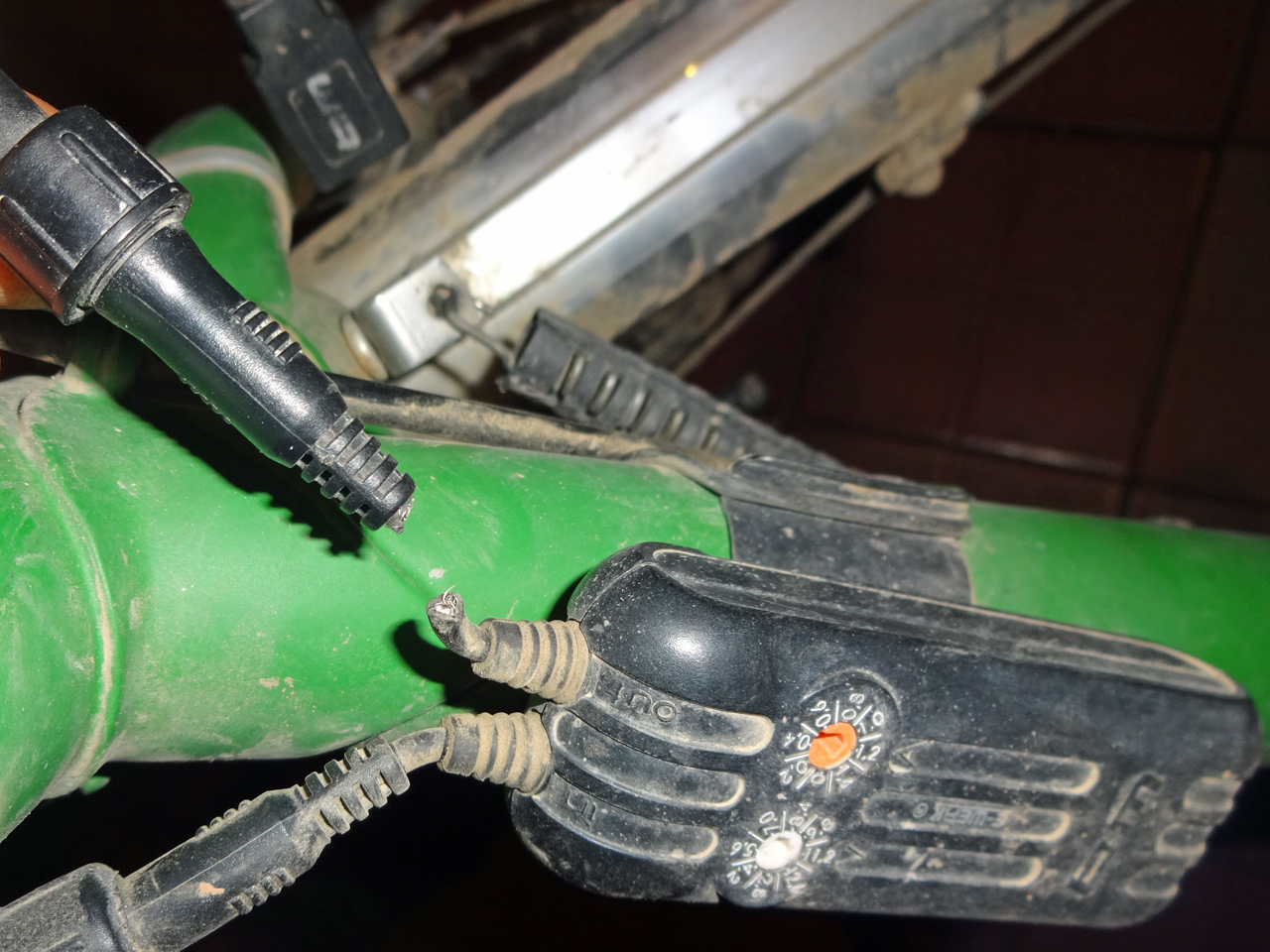
Repair
Unfortunately, I had many unexpected defects on my first trip to Eurasia. Over time, i started to expect some defects and therefore I had packed the following items:
- Multi tool with pliers
- Multi Tool (allen key, screwdriver etc.)
- Wrench
- Torx 40
- Repair kit for tubes
- Spare tube
- Small pump
- Digital manometer (Airmax Pro by Schwalbe)
- Duct tape and cable ties (great for improvising)
- Brake pads
- Chain oil
- Chain link
- Spare spokes
- Spare screws and nuts
- Needle and thread
- Reair kit for the panniers
- Seam Grip
- Repair kit for the stove
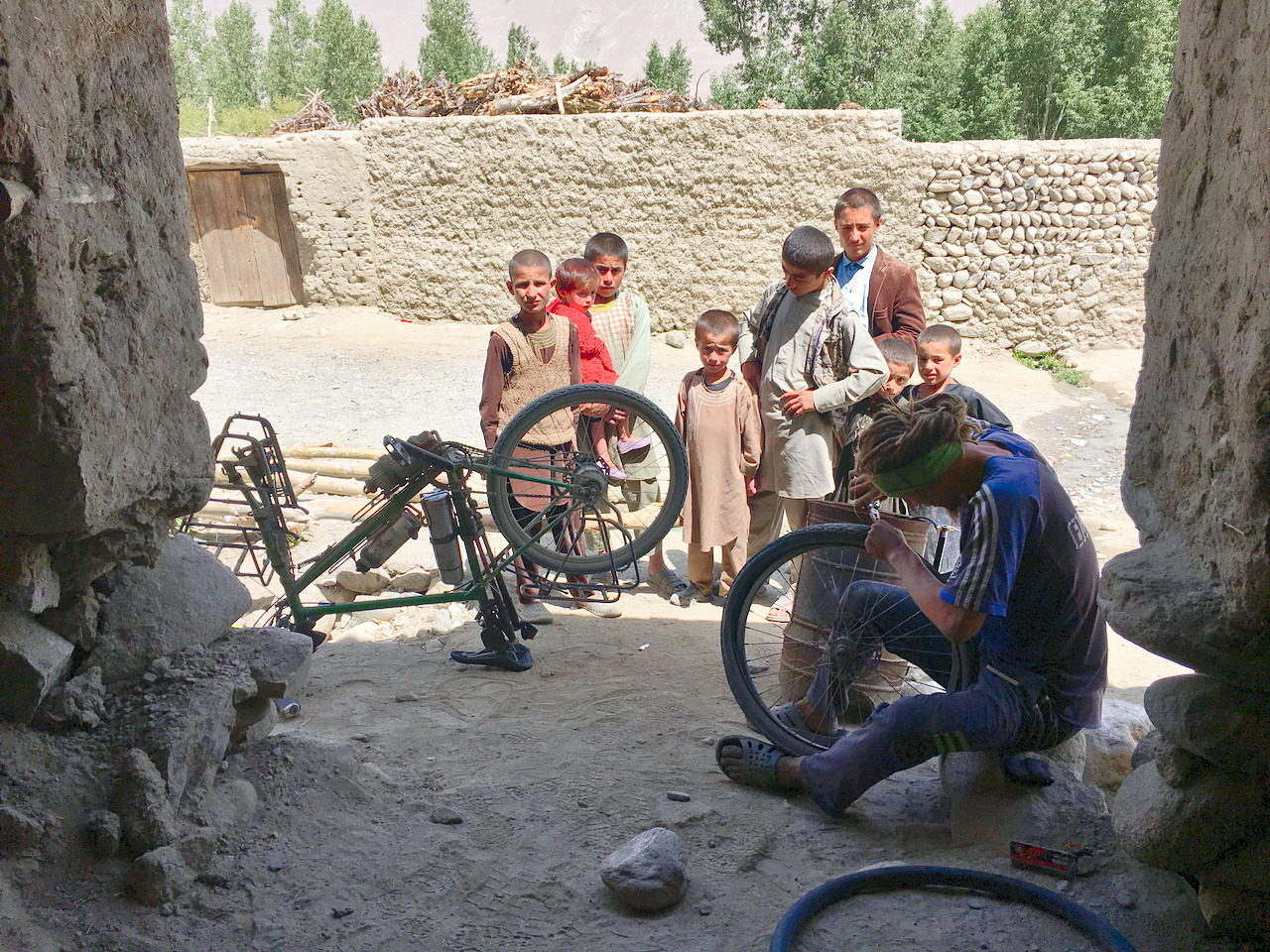
More Spare Parts
Some equipment can be extremely important when away from civilization, that’s why I was carrying these things twice:
- Complete spare stove (OmniLite Ti by Primus, unfortunately the stoves by Primus are NOT made for the hard outdoor use in my opinion, so I changed to a MSR XGK-EX after the trip.)
- Spare seals for the pump
- Very small spare pump
- Spare tire (foldable)
- Spare headlamp battery
- Lowrider mounting set for forks without eyelets by Tubus (if a screw breaks away from civilization and the broken part can not be removed immediately.)
- Perforated metal straps (if a screw breaks and the broken part can not be removed immediately.)
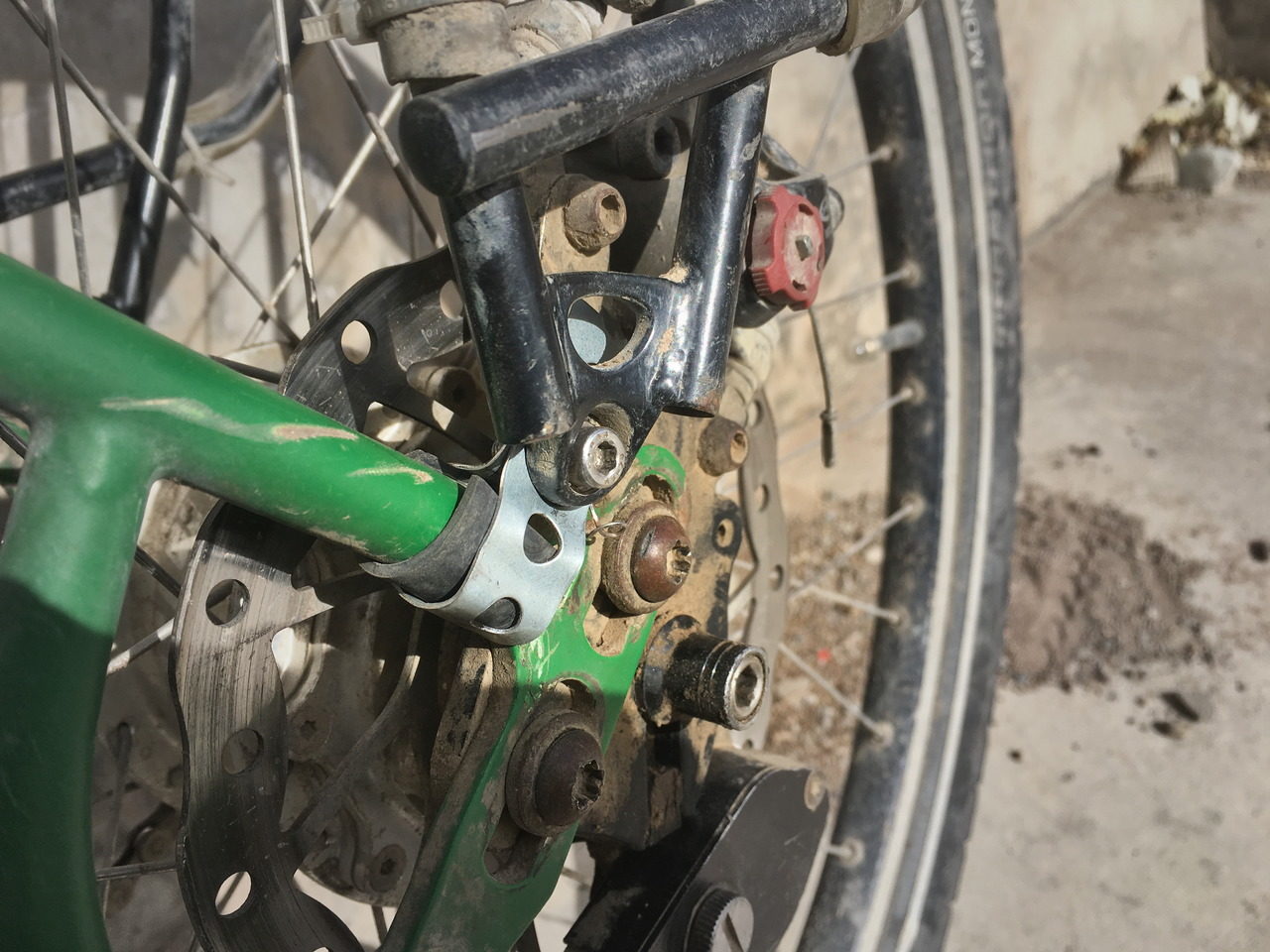
The following items, which apparently are in the luggage of many cyclists, can’t be found in my panniers:
(padded) cycling shortsBeanie(headband instead)Cutting board(used the plate instead)SpongeDishcloth(biodegradable) detergent(biodegradable) shampoo and / or soapTowelInsect protectionOintmentCombPaper maps(smartphone instead)Front light(headlamp instead)